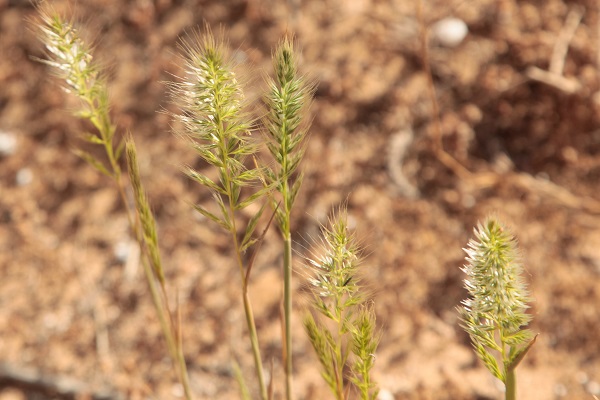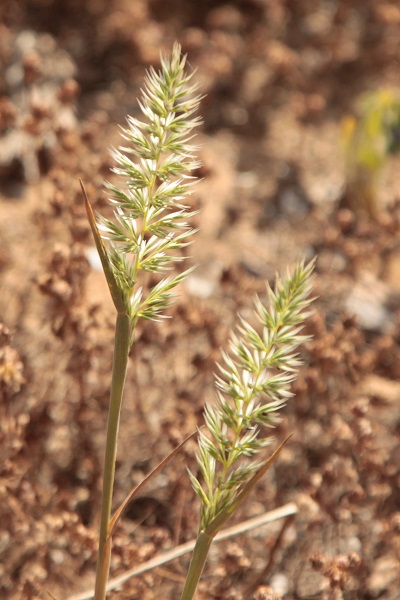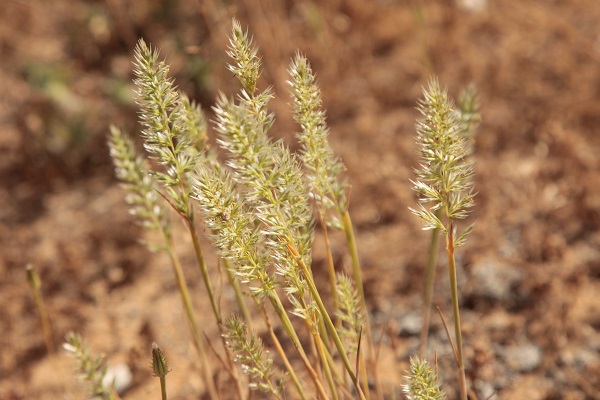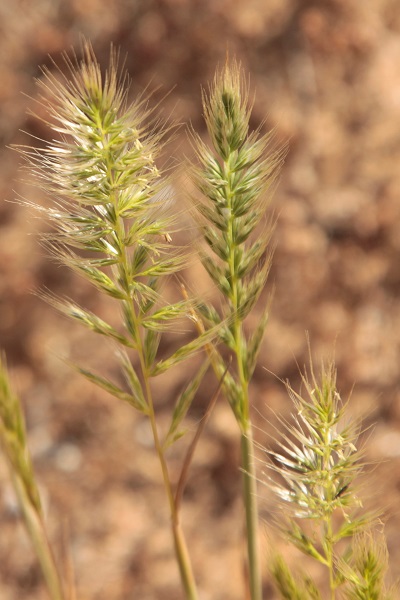Hebrew: שילשון סרגלני
| Scientific name: | Trisetaria linearis Forssk. | |
| Synonym name: | Trisetum lineare (Forssk.) Boiss., Avena arenaria (Labill.) Spreng. | |
| Common name: | Oatgrass | |
| Hebrew name: | שילשון סרגלני | |
| Arabic name: | الفار,...- El-Far | |
| Family: | Gramineae (Poaceae), Grass Family, משפחת הדגניים |

|
| Life form: | Annual | |
| Spinescence: | Non- | |
| Stems: | Culms 10–30 cm tall, erect, geniculate, sca- brous | |
| Leaves: | Alternate, leaves basal and cauline; sheaths longer than blades, flattened, pubescent, margins hairy, no stipule | |
| Inflorescence: | Panicles 5–10 cm long, 0.5–1 cm wide, spiciform, linear, subtended by an inflated leaf sheath. | |
| Flowers: | Green,pikelets 5–10 mm long, cuneate, laterally compressed; lemmas 3.5–7 mm long, 3-awned, central awns 8–10 mm long, geniculate, column twisted. | |
| Fruits / pods: | Homogeneous seeds-fruits | |
| Flowering Period: | March, April May | |
| Habitat: | Sand | |
| Distribution: | Mediterranean Woodlands and Shrublands, Semi-steppe shrublands, Shrub-steppes | |
| Chorotype: | Med-Saharo-Arabian | |
| Summer shedding: | Ephemeral |

Derivation of the botanical name: Trisetaria, tri- 'three'and Latin saeta (seta), ae á brisle, hair', referring to the three awns of the lemmas. linearis, narrow,with sides nearly parallel. Trisetum three + bristle: three-awned lemma. Avena, Latin for oats. arenaria,Latin arena, sand; an allusion to the fact that most of the species of these herbs prefer sandy places.


The photos were taken at the Iris reserve, Netanya. |